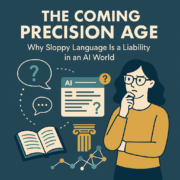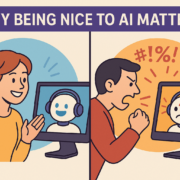Why Do LLMs Respond to Tips, Em Dashes, and Imperfect Data?
Why Do LLMs Respond to Tips, Em Dashes, and Imperfect Data?
Understanding the strange, statistical mind of large language models
If you’ve spent any time prompting a large language model (LLM), you’ve probably seen weird things happen.
You give the model a subtle tip — “this is important,” or “I’ll give you a reward” — and suddenly, it responds more confidently or accurately. Or you notice the model obsessively using em dashes in serious-sounding explanations. Even stranger: it often performs better when trained on diverse but imperfect data than when fed only clean, factually accurate information.
So what’s going on?
The answer lies in how these models learn — and why much of what they do is not logic, but pattern priming.
🧠 Why Research Doesn’t Always Explain the “Why”
Let’s start with the frustration many have: most LLM research just shows what works, not why it works.
That’s not entirely the researchers’ fault. Here’s why deeper explanations are so rare:
Interpretability research is still new. We’re only beginning to understand how internal patterns relate to behavior.
LLMs have billions of parameters. Their scale makes them incredibly opaque — we can’t just “look inside” and find answers.
Academic incentives reward benchmarks, not explanations. There’s more prestige in setting a new accuracy score than explaining why your model behaved a certain way.
But even if papers don’t explain these effects, we can still reason through them — especially if we understand what LLMs are really doing under the hood.
🎯 LLMs Don’t Seek Truth — They Predict Patterns
LLMs like GPT aren’t designed to tell you facts. They’re trained to do next-token prediction — that is, to guess what comes next in a sequence of text based on probability.
They don’t “know” the world. They know the statistical shape of language.
This is why prompts that sound like instructions — “here’s a tip,” “this is important,” “you’re being graded” — often improve results. The model has seen that these phrases usually precede well-structured, informative writing.
It’s not thinking, “Oh, I’d better try harder.”
It’s thinking (in a way), “Based on everything I’ve seen, this is what usually follows language like this.”
That’s pattern priming — and it applies to tone, structure, and yes, even punctuation.
💬 Why the Model Loves Em Dashes
You may have noticed LLMs often favor em dashes in serious, explanatory responses.
Why?
Because em dashes are common in editorial, academic, and well-edited content — the very type of text that’s overrepresented in the high-quality training data LLMs learn from.
So when a prompt sounds formal, educational, or reflective, the model mimics what it’s seen in similar contexts:
Clear sentences, strong transitions, and lots of em dashes.
Again, it’s not about logic or meaning.
It’s about statistical association: “This looks like the kind of writing that uses em dashes, so I’ll use one.”
🌈 Why Diversity Beats Accuracy in Training Data
This part confuses a lot of people — understandably.
How can LLMs learn effectively from inaccurate data, as long as it’s diverse?
It’s because LLMs don’t learn truth. They learn patterns.
To understand this, imagine you’re teaching a kid what a chair is.
If you show them 10 identical wooden chairs, they’ll learn a narrow definition of “chair.”
But if you show them a throne, a bar stool, a beanbag, and a lawn chair — even if some examples are weird or incomplete — they’ll generalize the concept better.
LLMs are the same.
Diverse data exposes them to a broader distribution of language patterns, even if some of it is noisy or inaccurate. That variation makes them more adaptable to new prompts.
On the other hand, feeding the model only “clean,” repetitive, accurate statements may reinforce correctness — but not flexibility.
This is why things like self-instruct and synthetic dataset bootstrapping work so well. They flood the model with new phrasing, varied tone, and linguistic richness, even if some of the content is wrong.
It’s the diversity of language, not the truth of the facts, that helps the model generalize.
🔚 Final Thoughts: LLMs Learn Like We Don’t
We often expect LLMs to behave like people — to care about meaning, truth, or goals.
But they don’t. They’re complex but fundamentally mechanical systems trained to recognize and generate statistically likely patterns of language.
So when you see a model improve just because you said, “I’ll give you a tip,” or you notice it favor em dashes, or you wonder why it can learn from noisy data — the real answer isn’t in logic or semantics.
It’s in the patterns.









Leave a Reply
Want to join the discussion?Feel free to contribute!